
In 1958, Joe Foster co-founded Reebok and helped grow the company to a $4 billion valuation. saysbefore leaving in 1991. (Adidas previously bought Reebok for $3.8 billion in 2005 I’ll sell it in 2021.)
Now the 89-year-old entrepreneur is helping launch a new high-tech shoe brand with fully 3D-printed flip-flops, which suggests they are printed, somewhat than assembled, layer by layer of stacked plastic filament.
It is also the first commercially available shoe designed by artificial intelligence, says the founder Entrepreneur.
Source: Syntilay
The shoe is the first of Sintilaya brand that Foster advises. The founder and CEO of Syntilay is a serial entrepreneur Ben Weiss25, who previously launched a weekly podcast, an NFT company, and a sneaker brand.
Weiss and Foster on Thursday introduced flip-flops to the lucrative U.S. footwear market, which generated about $78 billion in revenue in 2021 and is projected to achieve $104 billion in 2028. by RunRepeat.
The shoe is available in five colours – blue, black, red, beige and orange – and is custom-made to suit each buyer.
Weiss and Foster said they plan to provide about a few thousand pairs, enough to make the Syntilay brand more recognizable, before they switch gears and create unique AI-designed shoes that brands and content creators can sell as their very own.
Entrepreneur I talked to the founders about how they got into the business, how artificial intelligence contributed to the shoe’s design, and what Foster learned from Reebok.
How did this partnership start?
Cultivate: Ben [Weiss] he got here to us with an idea. I think what inspired us was Ben’s enthusiasm. This cooperation has been going on for 18 months.
Weiss: I just contacted you and a few months later we met in person and had some great chats. I just explained this possibility here.
There is no traditional size for these slides. How do people adapt to individual needs?
Weiss: The shoes are scanned for fitting using your phone’s camera app. Our partner Zellerfeld supports this method. They have a great approach to find the best fitting shoe that takes your measurements from your phone camera and 3D prints them.
Can you tell me more about the design of the shoe?
Weiss: The design is quite unique because we generated its shape using artificial intelligence. This was the inspiration for what we built. Our sketch was made by us [human] designer, and then we simply generated a 3D shape from it using artificial intelligence. All patterns on the shoe are also designed by artificial intelligence; we generated patterns. We played around with many different versions of this. And so it is very detailed.
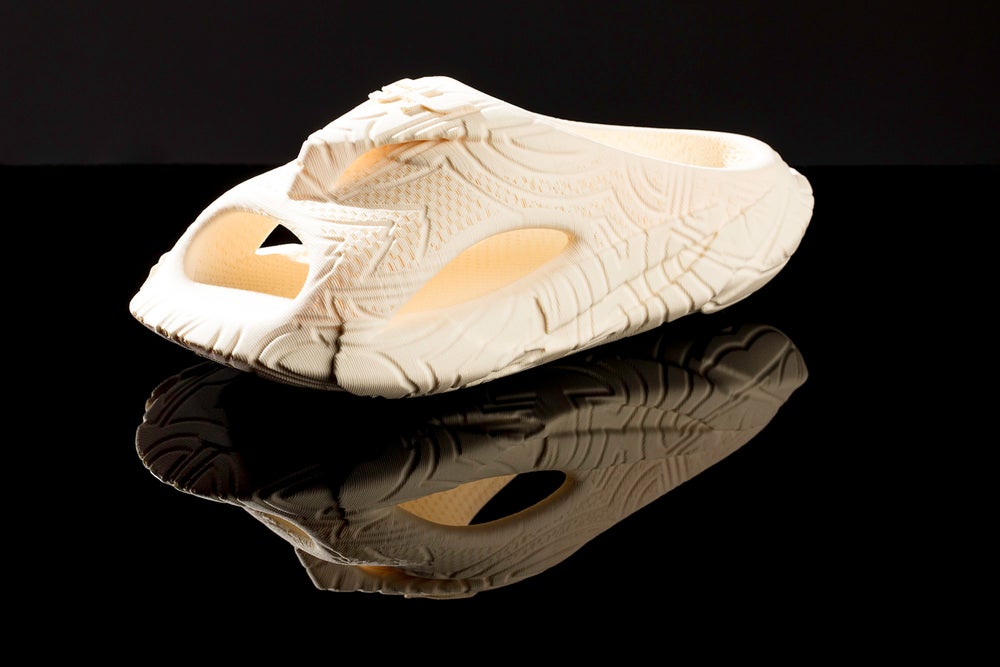 Source: Syntilay
Source: Syntilay
So would you concentrate on the shoe to be designed by artificial intelligence, or was there more human involvement?
Weiss: I might say it’s quite divided. It is the most AI-designed shoe ever produced. It’s very much an AI shoe. We still had a human designer to assist us create it and guide us along the way. I think this is probably the smartest thing that may be done because it stands.
What are the benefits and disadvantages of 3D printed shoes?
Cultivate: The advantage is that it hastens development. You can produce the product in a few days and if it is incorrect, you may get a new sample. So the development is much faster. Now, how much this may be developed and what the process is, we are still learning. The drawback is that you just cannot do high-volume 3D printing, but you may bring the product to market and make certain that the product will do its job.
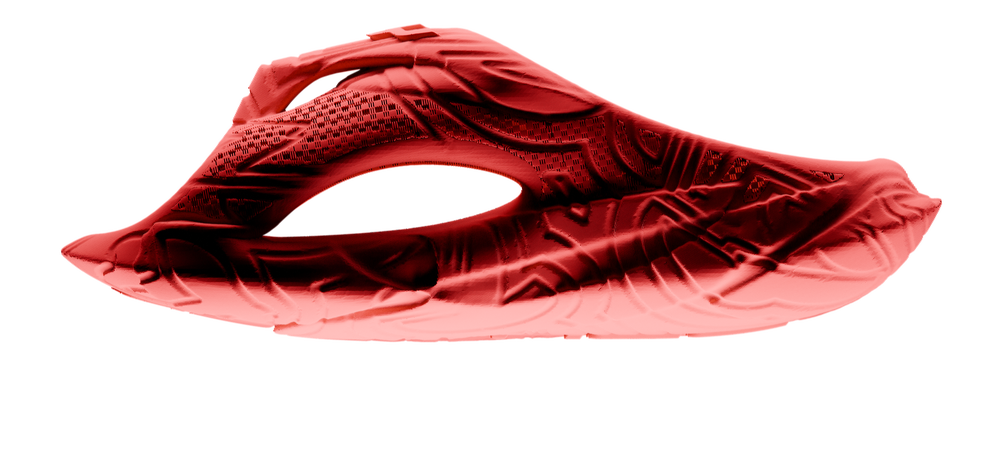
The side profile of the guides is red. Source: Syntilay
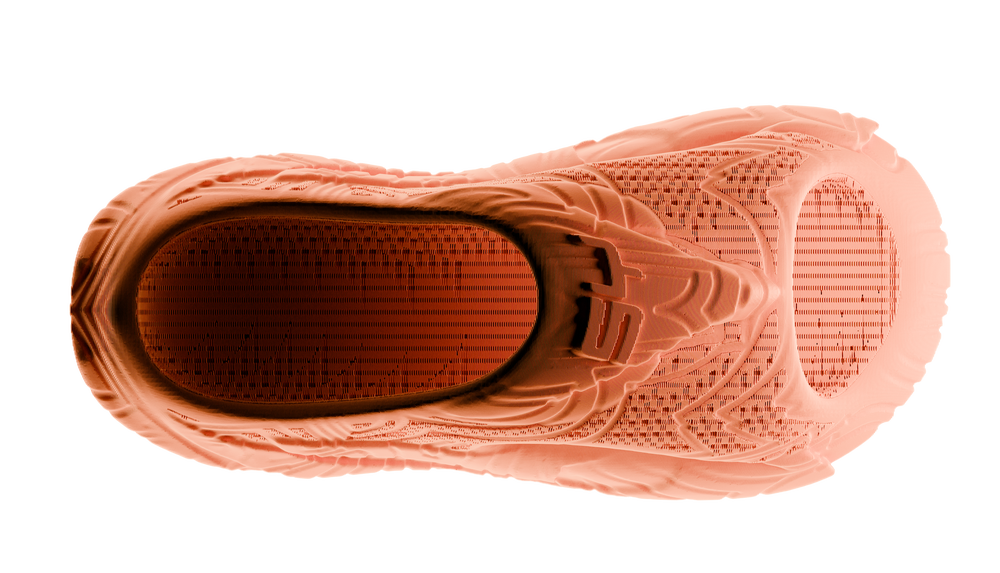 The upper of the shoe is orange. Source: Syntilay
The upper of the shoe is orange. Source: Syntilay
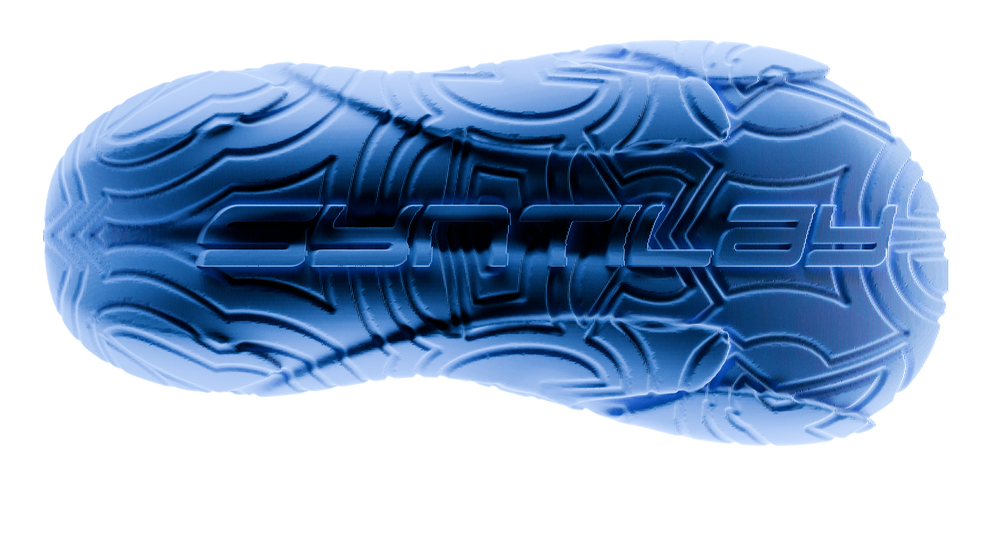 The bottom of the shoe is blue. Source: Syntilay
The bottom of the shoe is blue. Source: Syntilay
What lessons did you learn at Reebok and how do you intend to use them here?
Cultivate: We learned that you could encounter problems, you could encounter challenges, but those challenges are opportunities. We began our business as Mercury Sports Footwear. We couldn’t register it, so we got here up with a higher name. We also had to vary the silhouette because Adidas didn’t like our two stripes and T-bar. We modified it to the vector you now see at Reebok. I think that is how it is best to deal with the whole lot. If you run a business, you have to be ready for change, ready for change. What you really want to do is look for changes. And if someone challenges you, it’s a good opportunity.
How do you hope to develop Syntilay?
Weiss:We’re starting with this pair of shoes, now in different colours, but overall it’s quite a limited run. Ultimately, we would like to present many brands and content creators a probability to enter the footwear space. Today we have a faster method of making shoes using artificial intelligence and 3D printing. Our approach is to create completely new, original designs for brands and influencers.
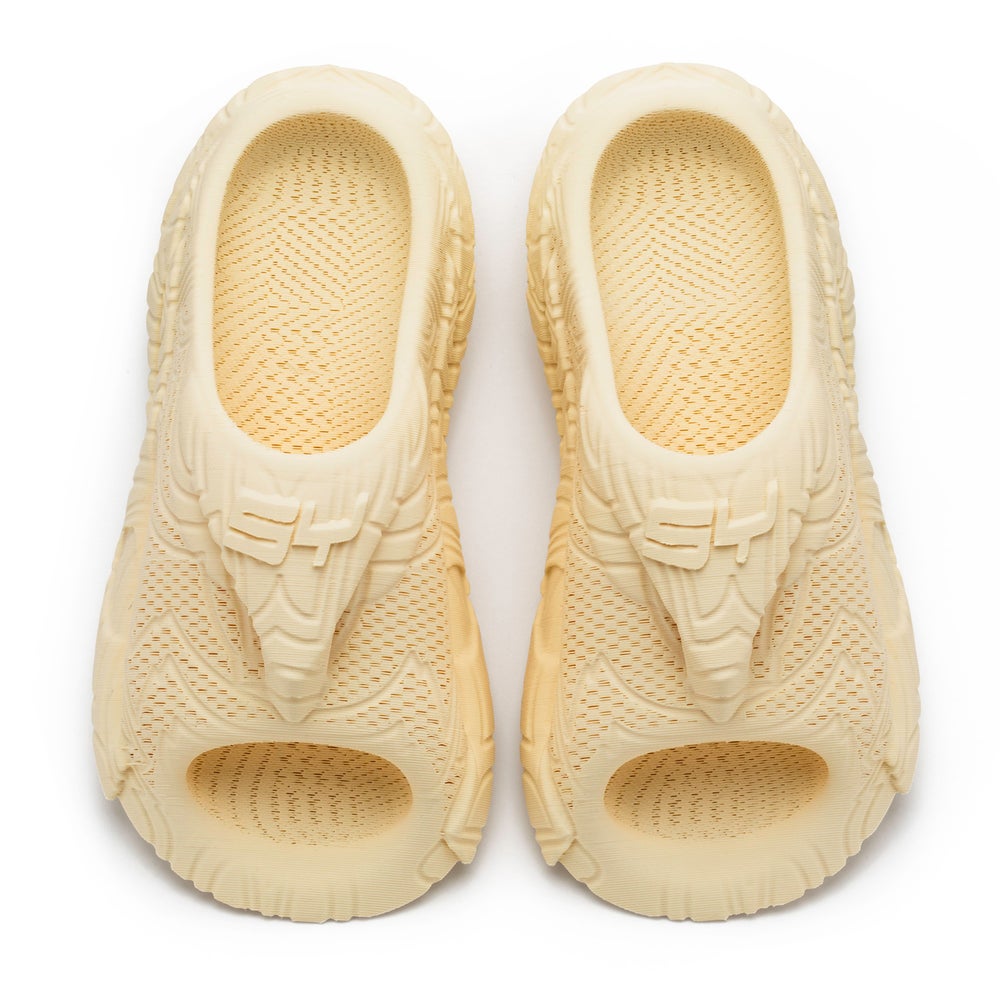 A pair of slides. Source: Syntilay
A pair of slides. Source: Syntilay
What is the ultimate goal of this launch?
Cultivate:It took me 10 years to introduce Reebok to America. But when we received 5 stars from Runner’s World, a change occurred. They wanted us then – America wanted Reebok. We have gained credibility. At some point in this process, Syntilay will gain credibility. It may be quite simple. It could also be one person. The point now is to get those shoes out and capture people’s imagination: “Wow, this is brilliant.”
This interview has been calmly edited and cropped for clarity.

